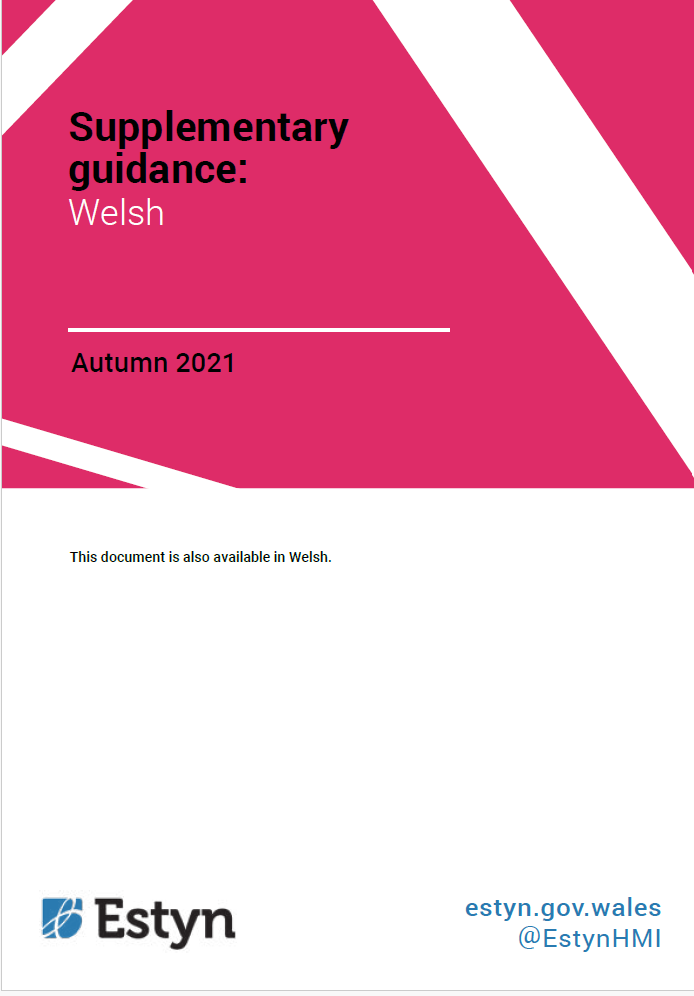Inspection Guidance Type: What and how we inspect

This supplementary guidance is aimed at supporting inspectors to:
- evaluate the extent to which leaders and managers plan strategically purposeful opportunities for pupils to develop their Welsh language skills in formal and informal situations and implement these plans effectively
- evaluate the extent and quality of the school’s provision for the development of Welsh language communication skills in formal teaching activities and in informal situations
- evaluate how well the school teaches pupils about the advantages of learning Welsh and being bilingual
- where appropriate, inspectors should consider how well the proportion of teaching in Welsh matches the school’s official language categorisation
- evaluate pupils’ ability to speak and respond to spoken Welsh compared with pupils in schools in similar contexts and their starting points
- evaluate the progress pupils make in developing their communication skills in Welsh for their learning across the curriculum and in more informal contexts.
When inspecting literacy skills (Welsh) in Welsh-medium, bilingual and English-medium schools and PRUs, you should also refer to the supplementary guidance: Supplementary guidance for the inspection of Welsh and English literacy in schools and PRUs which can also be found on Estyn’s website
The revised Inspection Framework (September, 2021) sets a requirement for inspectors to evaluate and comment on the Welsh language in:
5.1 (Quality and effectiveness of leaders and managers, including the governing body),
3.1 (The breadth, balance and appropriateness of the curriculum), and in
1.1 (Standards and progress in learning and skills [listening and reading, speaking and writing]).
The report has been presented in this way as 5.1 incorporates the strategic vision of leaders for Welsh in their settings in addition to the self-evaluation processes, priorities and professional learning in order to support the teaching (3.1) and learning (1.1). In addition, inspectors are free to report on aspects related to Welsh that are linked to inspection area 2 (Wellbeing and attitudes to learning) and inspection area 4 (Care, support and guidance).